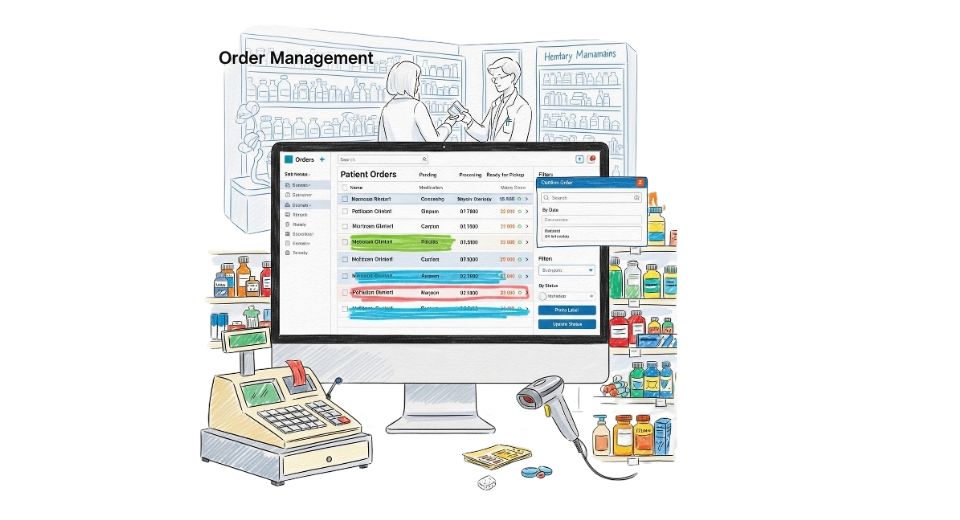
Aug 11, 2025

The new report from Metastat Insight on the Global Order Management Software Market presents a detailed description of an industry that has steadily emerged as the backbone for much commercial activity today. In a world where business deals are transacted across borders, time zones, and channels, coordinating orders with accuracy is no longer an issue of operational practicality but a requirement in upholding credibility and customer satisfaction. This report comes at the topic with the depth of focus surpassing surface-level commentary, looking at how such systems have transitioned from niche products to fundamental elements stitched into the operational infrastructure of firms across various industries.
Most notable in the dialogue is the evolution of order management from a standalone function to a centralized process integrated with nearly every point of the supply and fulfillment chain. The software in question no longer stops at monitoring purchases or verifying shipments; it communicates with stock systems, synchronizes with accounting modules, and interfaces with customer interaction platforms to ensure a seamless chain of events. Not only has this convergence enhanced efficiency, but it has also redefined how companies perceive the interface between internal processes and customer experience. A smoother internal operation now increasingly means customer-responsive and personalized dealings with clients. This in turn enforces brand loyalty.
Adoption trends are also reflected in the broadening choice of deployment models, as evidenced in the report. Whereas some enterprises prefer on-premises infrastructure to ensure they can have direct control, others have bought into cloud-based platforms with flexibility and scalability without having to manage physical servers. This range of choice mirrors how suppliers have tailored themselves to the needs and performance requirements of various sectors. The software is being customised with modular functionality such that organisations can introduce only what they require and build out later as their processes mature, not adding unnecessary complexity upfront.
One interesting point raised is the place of integration in establishing user expectations. Companies increasingly want solutions that don't involve jarring overhauls of established systems. Rather, there is a growing focus on platforms that can integrate seamlessly with the tools already in place. That has created more open APIs, bespoke plug-ins, and flexible frameworks that fill the space between legacy and new. Such flexibility has been crucial in industries where old systems continue to carry out specialized functions but must coexist with newer technology. The Global Order Management Software Market has thus evolved into a realm where innovation is not a matter of replacing but upgrading in smart connectivity.
The discussion is not just about functionality. How these platforms are delivered and serviced has also changed. Service models increasingly incorporate ongoing updates, distant troubleshooting, and user training sessions that are intended to keep teams current with the software's changing features. Momentum long after the first installation is emphasized, guaranteeing that the investment will still have concrete payoffs. Vendors are discovering that long-term client relationships depend as much on support as they do on the product's degree of sophistication.
What's presented from this report is the image of a competitive and cooperative market. There is competition on innovation and efficiency, but also a feeling of collective progress as interoperability standards and integration guidelines get more sophisticated. This two-sided dynamic is what allows for progress without breaking the larger ecosystem. The scene is one in which technological innovation and business necessity intersect within a space that values both adaptability and stability.
It is also interesting to see how user expectations have changed when it comes to accessibility. Interfaces become easier to use, with dashboards that even non-technical staff can use to drive, track, and respond to order-related information with ease. Visualisation tools turn raw data into usable insight, decreasing dependence on specialist interpretation and enabling more widespread participation in decision-making. This inclusivity is not merely convenient; it increases the worth of the software across various levels of an organisation.
In its description of the Global Order Management Software Market, the Metastat Insight publication also suggests the cultural changes in organisations that implement these systems. Previously reactive processes are becoming proactive, and predictive abilities are anticipating problems before they are able to interrupt operations. This is causing a mind-set in which order management is no longer about the mere execution of transactions but about choreographing a responsive, dynamic business rhythm. The impact on long-term strategy is deep, as businesses start to architect their operational designs around capabilities that foster agility without compromising control.
It is at the conclusion of the conversation, however, that it becomes apparent the topic is not so much technical as strategic and influences how organisations construct their relationships with customers and partners. The Global Order Management Software Market, as described through the efforts of Metastat Insight, is not so much a product category as a system that allows for the operation of modern commerce to be more coherent and responsive. It presents a vision of one in which operational accuracy and customer interaction become no longer distinct issues but components of a single, evolving process. It deepens one's understanding of how the technology operates in the background but significantly shapes the stream of business across sectors and geographies.
Drop us an email at:
Call us on:
+1 214 613 5758
+91 73850 57479